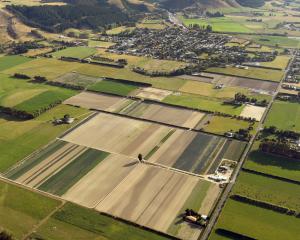
WHAT ARE YOU RESEARCHING AT THE MOMENT?
My focus is currently on improving predictions of sea-level rise for New Zealand.
We have a new $7 million collaborative research programme called NZSeaRise, funded by the Ministry of Business, Innovation & Employment, that involves 35 researchers from Victoria University of Wellington, University of Otago, GNS Science and NIWA, iwi and local authorities such as Otago Regional Council, Greater Wellington Regional Council, and Hawke's Bay Regional Council. One of our case studies will use the new sea-level estimates for Dunedin to understand its impact on groundwater inundation and surface flooding.
WHY DOES THAT INTEREST YOU?
One of the largest uncertainties in making robust predictions for global sea-level rise in the face of ongoing global warming is estimating how the polar ice sheets will melt.
Our team has world-leading expertise that will help reduce the uncertainty for the next Intergovernmental Panel on Climate Change Assessment (IPCC) report. Some ice sheet models have gained a lot of media attention because they suggest that the potential contribution from the polar ice sheets by the end of the century could be underestimated by as much as 80cm in the current IPCC report, and sea-level could rise by as much as 2m for a future scenario where the world fails to reduce greenhouse gas emissions. This is providing a massive challenge for decision makers, planners, and the public, and critically needs more research and assessment.
Also, in New Zealand we have substantial vertical land movements, both when earthquakes occur such as Kaikoura, and between earthquakes, which can add substantially to the amount of sea-level rise expected at specific locations. For example, in South Dunedin the land is subsiding 1-2mm per year, and in Wellington the land is subsiding up to 4mm year. Global sea-level is rising about 3.3mm per year. So you can do the math!
WHAT ACTIONS MIGHT IT INDICATE?
Our research programme provides improved, location specific predictions of sea-level rise for the entire New Zealand coastline, for a range of global warming scenarios, including achieving the Paris Agreement target and on the other hand unabated emissions.
These will feed into the Ministry for the Environment Coastal Hazards Guidance for Local Government, and will be utilised more widely by the insurance (risk), financial, building and infrastructure sectors. For Dunedin we will have a better understanding of the cumulative impact of sea-level rise and extreme rainfall on the groundwater system and surface flooding.
WHY SHOULD WE CARE?
We should care because we can do something to avoid the worst consequences of global climate change. In the case of sea-level rise much of our population and built environment is vulnerable, and we are already seeing adverse consequences in places like Dunedin, Christchurch, Thames, Granity, Hector and Haumoana.
While we must continue to put as much effort as we can, both globally and in New Zealand, to achieve the Paris target of limiting global warming to less than 2degC, we must also act in earnest to adapt. For example, we know we have 20-30cm of sea-level rise built into the system by about 2060 that we can prepare for.
Prof Tim Naish works at the Antarctic Research Centre, Victoria University of Wellington.












